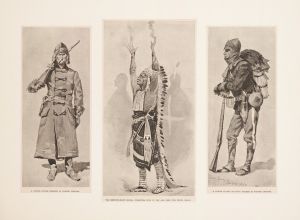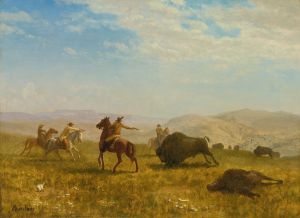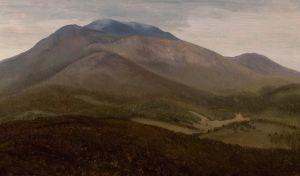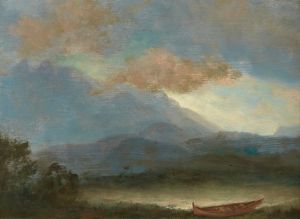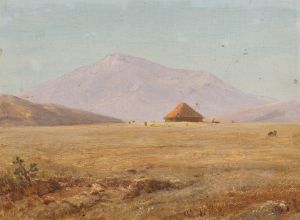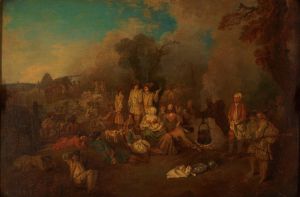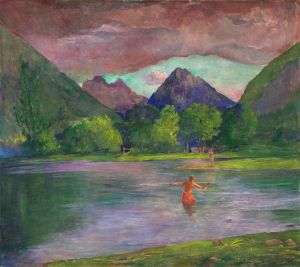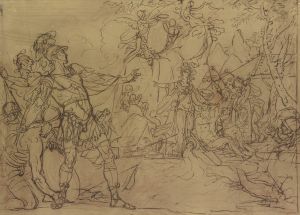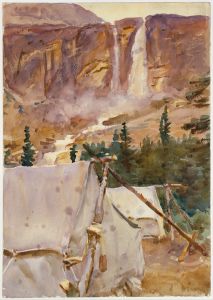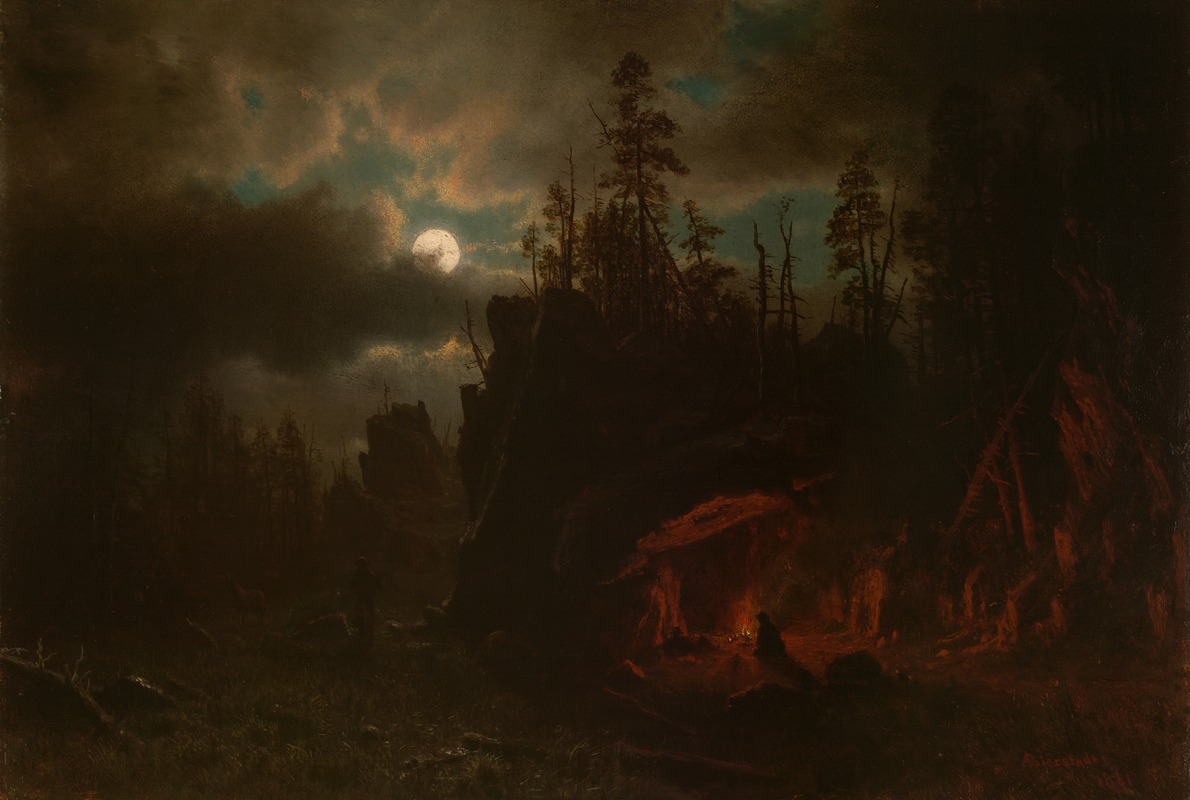
The Trappers’ Camp
A hand-painted replica of Albert Bierstadt’s masterpiece The Trappers’ Camp, meticulously crafted by professional artists to capture the true essence of the original. Each piece is created with museum-quality canvas and rare mineral pigments, carefully painted by experienced artists with delicate brushstrokes and rich, layered colors to perfectly recreate the texture of the original artwork. Unlike machine-printed reproductions, this hand-painted version brings the painting to life, infused with the artist’s emotions and skill in every stroke. Whether for personal collection or home decoration, it instantly elevates the artistic atmosphere of any space.
Albert Bierstadt was a renowned 19th-century American painter known for his grandiose landscapes of the American West. One of his notable works is "The Trappers’ Camp," which exemplifies his skill in capturing the vastness and beauty of the American wilderness. Bierstadt was part of the Hudson River School, a group of artists who focused on romantic landscapes, and he became particularly famous for his depictions of the Rocky Mountains and the Sierra Nevada.
"The Trappers’ Camp" reflects Bierstadt's fascination with the American frontier and the life of trappers, who were among the early explorers and settlers of the West. The painting showcases Bierstadt's characteristic attention to detail and his ability to convey the majesty of nature. His works often included dramatic lighting and atmospheric effects, which are evident in this painting as well.
Bierstadt's technique involved meticulous observation and sketching during his travels, which he later used to create large-scale paintings in his studio. "The Trappers’ Camp" likely draws from his experiences and sketches made during his expeditions. These trips were often arduous, involving travel by horseback and wagon, and they provided Bierstadt with firsthand knowledge of the landscapes he depicted.
The painting features a serene campsite set against a backdrop of towering mountains and lush forests, capturing a moment of tranquility in the otherwise rugged life of trappers. Bierstadt's use of light and shadow adds depth and realism to the scene, inviting viewers to immerse themselves in the depicted environment. The composition reflects his ability to balance detailed foreground elements with expansive backgrounds, a hallmark of his style.
Bierstadt's work, including "The Trappers’ Camp," played a significant role in shaping public perception of the American West during the 19th century. His paintings were exhibited widely and often sold for substantial sums, contributing to the romanticized view of the West as a land of untamed beauty and opportunity. This romanticism was influential during a time of westward expansion in the United States, as it inspired both settlers and policymakers.
While "The Trappers’ Camp" is not as widely known as some of Bierstadt's other works, such as "The Rocky Mountains, Lander's Peak" or "Among the Sierra Nevada, California," it remains an important piece within his oeuvre. It exemplifies his dedication to capturing the spirit of the American wilderness and the people who inhabited it.
Bierstadt's legacy endures through his contributions to American art and his influence on the perception of the West. His paintings continue to be celebrated for their technical mastery and their role in documenting a pivotal era in American history. "The Trappers’ Camp" is a testament to Bierstadt's artistic vision and his ability to transport viewers to the heart of the 19th-century American frontier.





